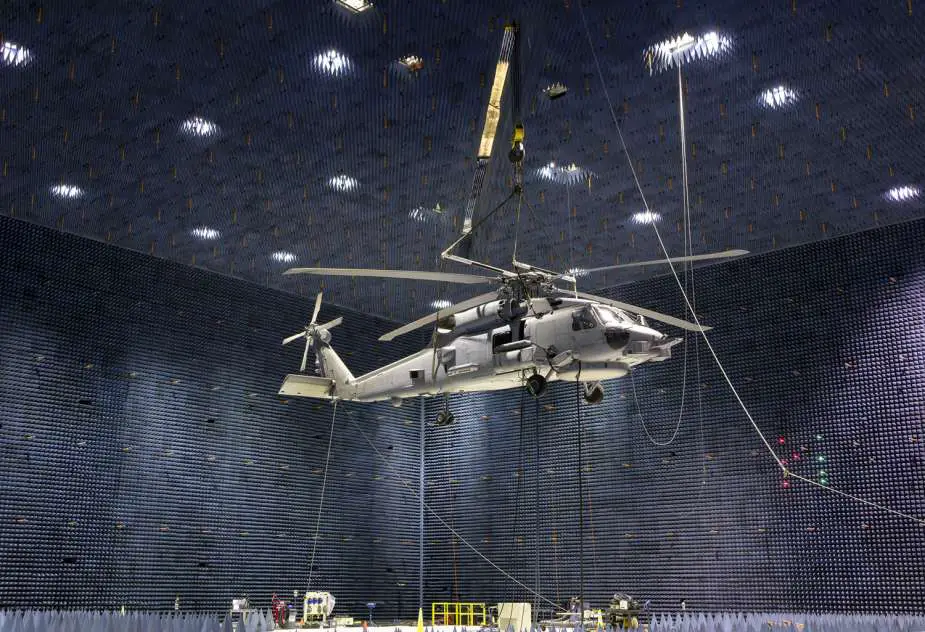Breaking news
US Navy and Lockheed Martin successfully test key capabilities of advanced off-board electronic warfare system.
Lockheed Martin recently played a pivotal role in supporting a significant government test of the Advanced Off-Board Electronic Warfare (AOEW) system's electronic attack capabilities. This groundbreaking test was conducted while the system was installed on a U.S. Navy MH-60R helicopter, marking a crucial milestone in the program's development. It was the first time that the system demonstrated its ability to perform engagement testing, effectively defeat threats, and quantitatively assess its performance while being seamlessly integrated and controlled by the target platform.
Follow Navy Recognition on Google News at this link
 Anechoic chamber at the Naval Air Warfare Center Aircraft Division at Naval Air Station Patuxent River (Picture source: U.S. Navy/Terri Thomas)
Anechoic chamber at the Naval Air Warfare Center Aircraft Division at Naval Air Station Patuxent River (Picture source: U.S. Navy/Terri Thomas)
This collaborative effort with the U.S. Navy took place at Naval Air Station Patuxent River in Maryland, where the focus was on evaluating the system's capabilities and operability when mounted on the MH-60R helicopter platform. While the AOEW system is designed to be compatible with both the MH-60R and MR-60S host platforms, this specific test exclusively involved the MH-60R.
Deon Viergutz, the vice president of Spectrum Convergence at Lockheed Martin, emphasized the significance of the AOEW system, describing it as one of the most advanced and complex electronic warfare systems ever developed. He underscored its potential as a force multiplier for U.S. Navy personnel, enabling them to assert dominance and exercise control over the battlespace without the need to fire a single shot. Furthermore, the AOEW system is designed with adaptability in mind, featuring programmability that allows it to evolve, deliver, and deploy new techniques as the threat landscape evolves.
The AOEW system itself is a pod-based electronic warfare missile defense system designed to provide the U.S. Navy with heightened electronic surveillance and attack capabilities, particularly against anti-ship missile threats. The system has undergone a series of successful incremental developmental and operational tests at Lockheed Martin's facility in Syracuse, New York.
Key features of the AOEW system include its full integration compatibility with Aegis Baseline 9C.2+ and the Surface Warfare Electronic Warfare Improvement Program Block II. It can operate independently or in conjunction with other systems on ships and various assets. The system's open-systems architecture facilitates rapid upgrades, promotes interoperability, reduces lifecycle costs, and allows for the swift incorporation of new hardware. Furthermore, the architectural framework and technologies underlying AOEW pave the way for the deployment of similar capabilities on other assets, such as small ships or unmanned aerial and surface vehicles.
Looking ahead, there are plans for additional tests and demonstrations of the AOEW pod on host platforms in 2024. The insights gained from these tests will contribute to ongoing efforts to refine the system's performance. Currently, AOEW is in the initial stages of production, with deliveries of the first AOEW units anticipated in the coming year. This marks a significant step forward in bolstering the U.S. Navy's electronic warfare capabilities and enhancing its ability to defend against emerging threats.



























